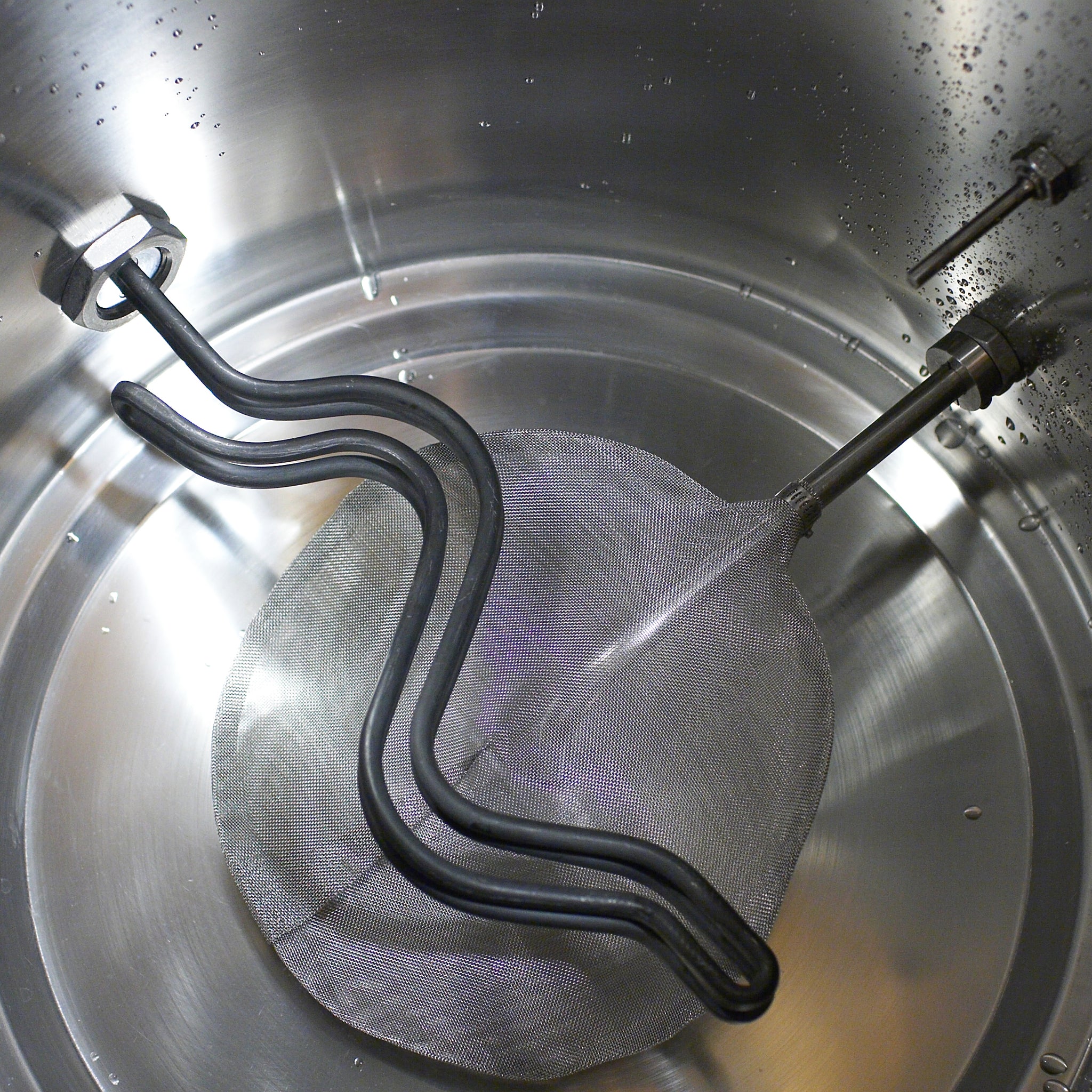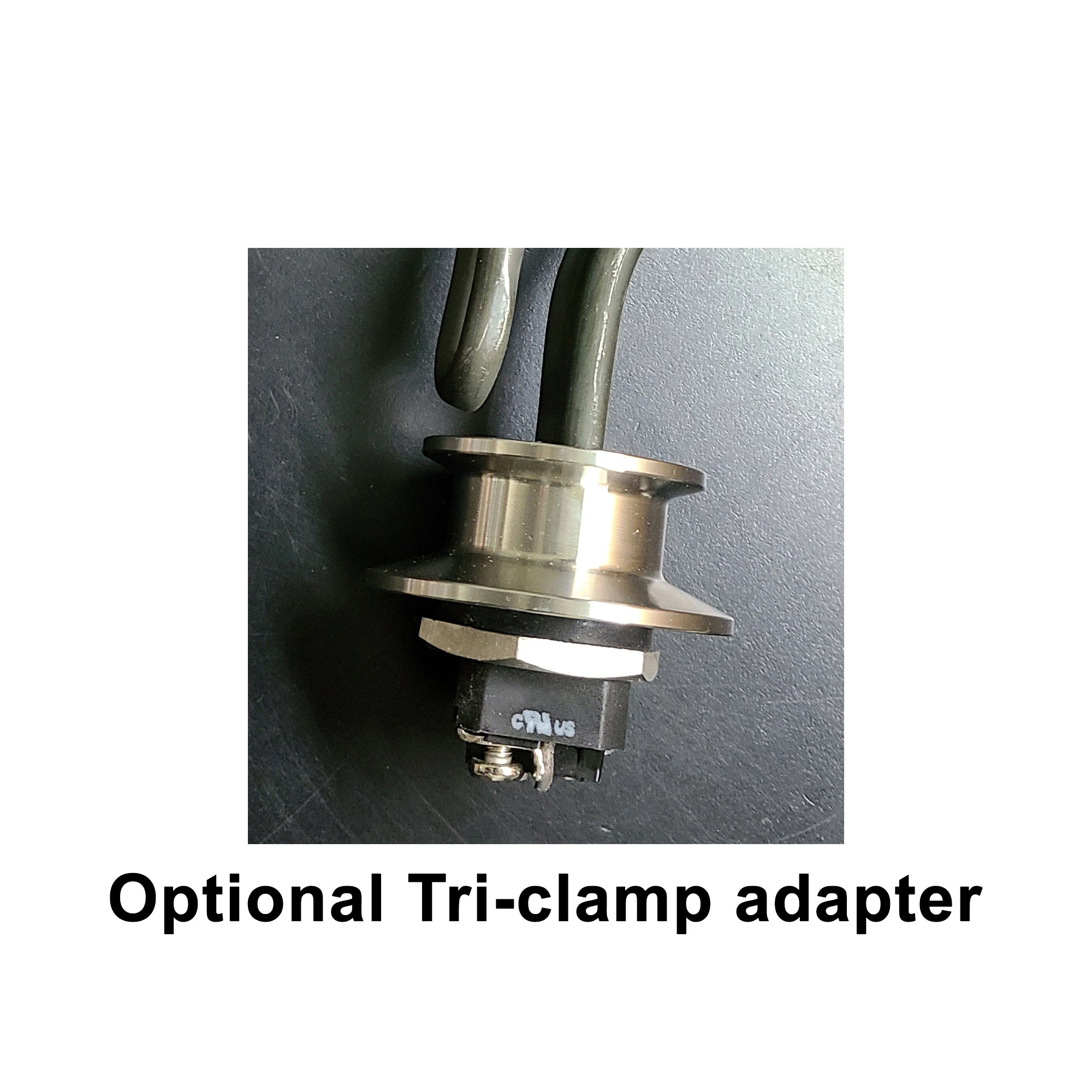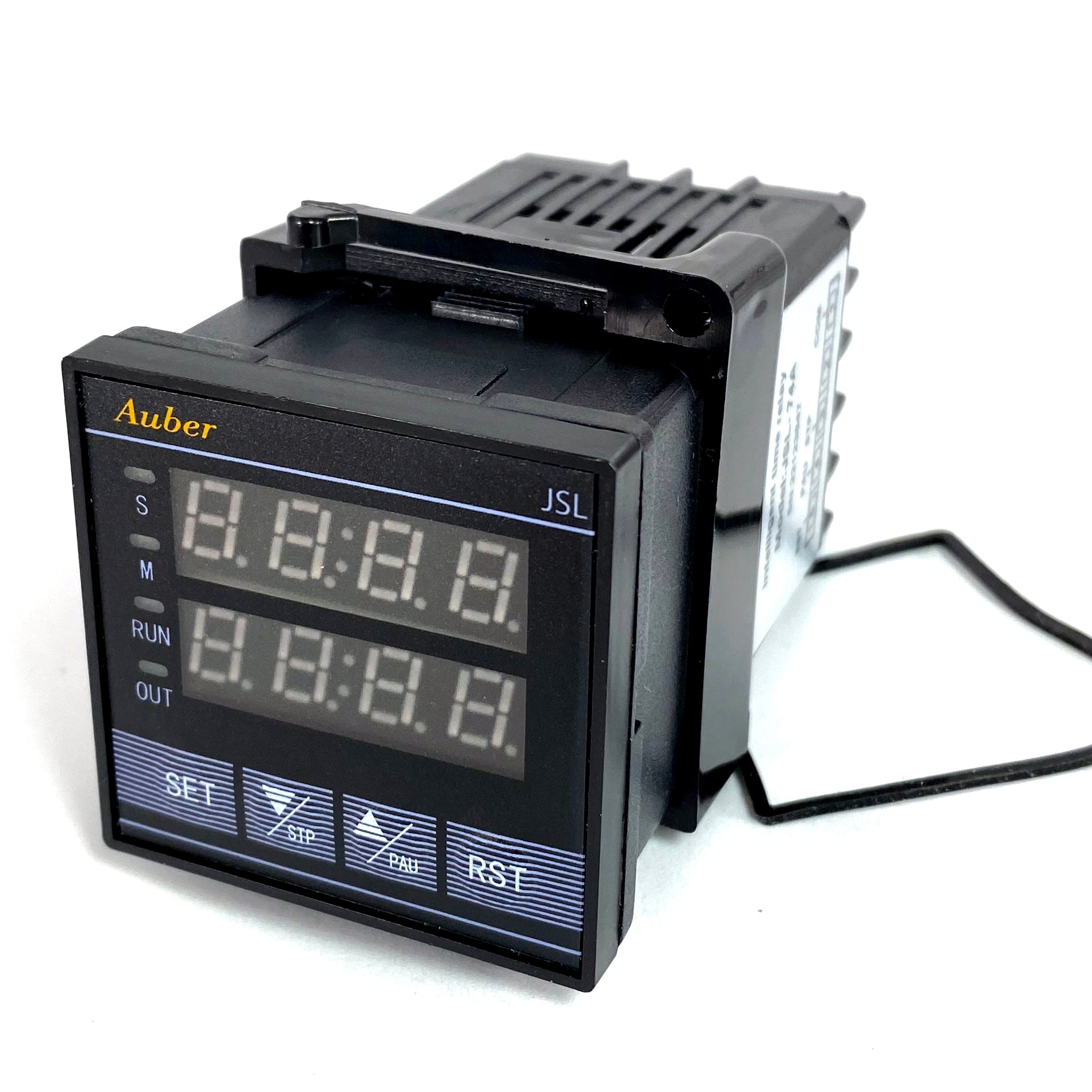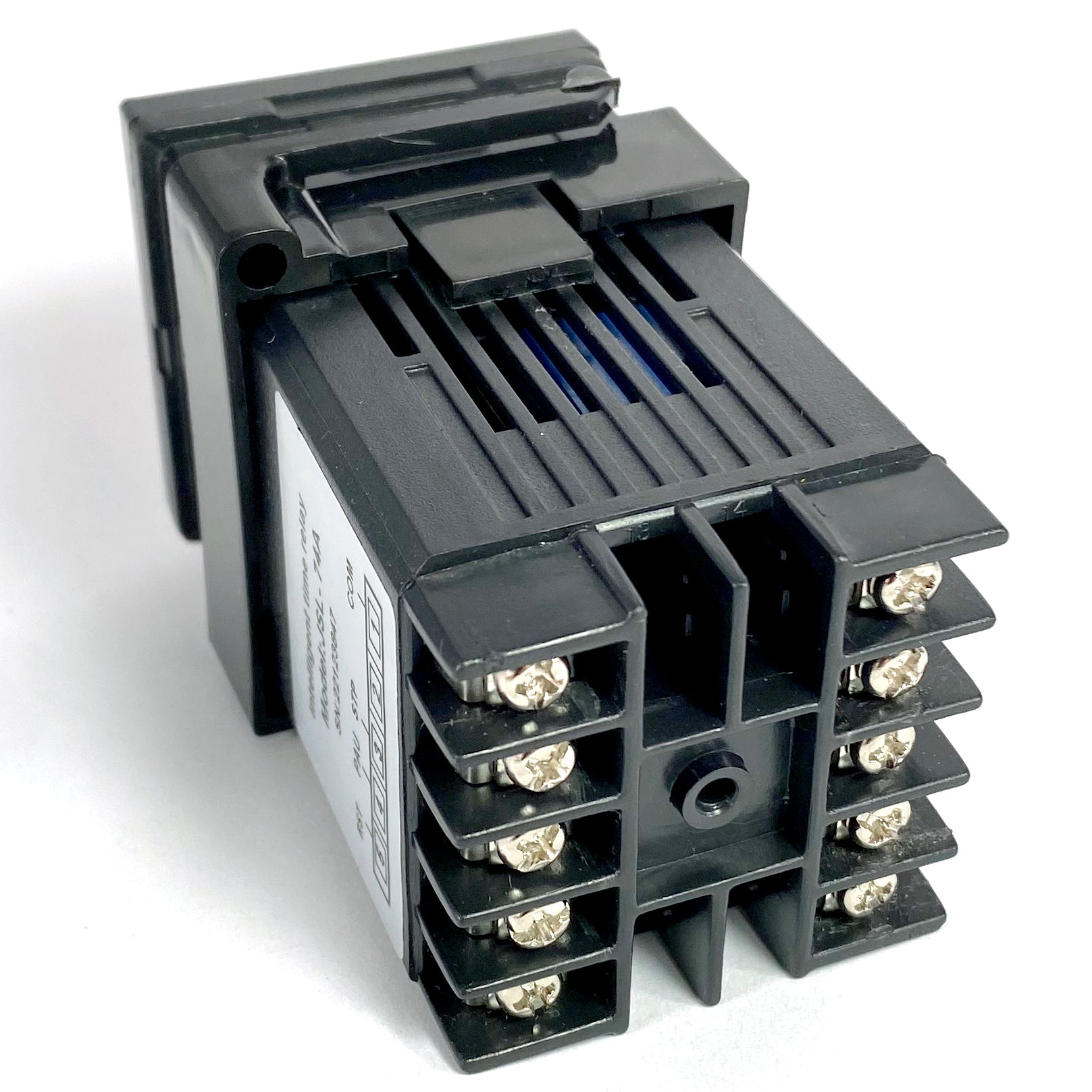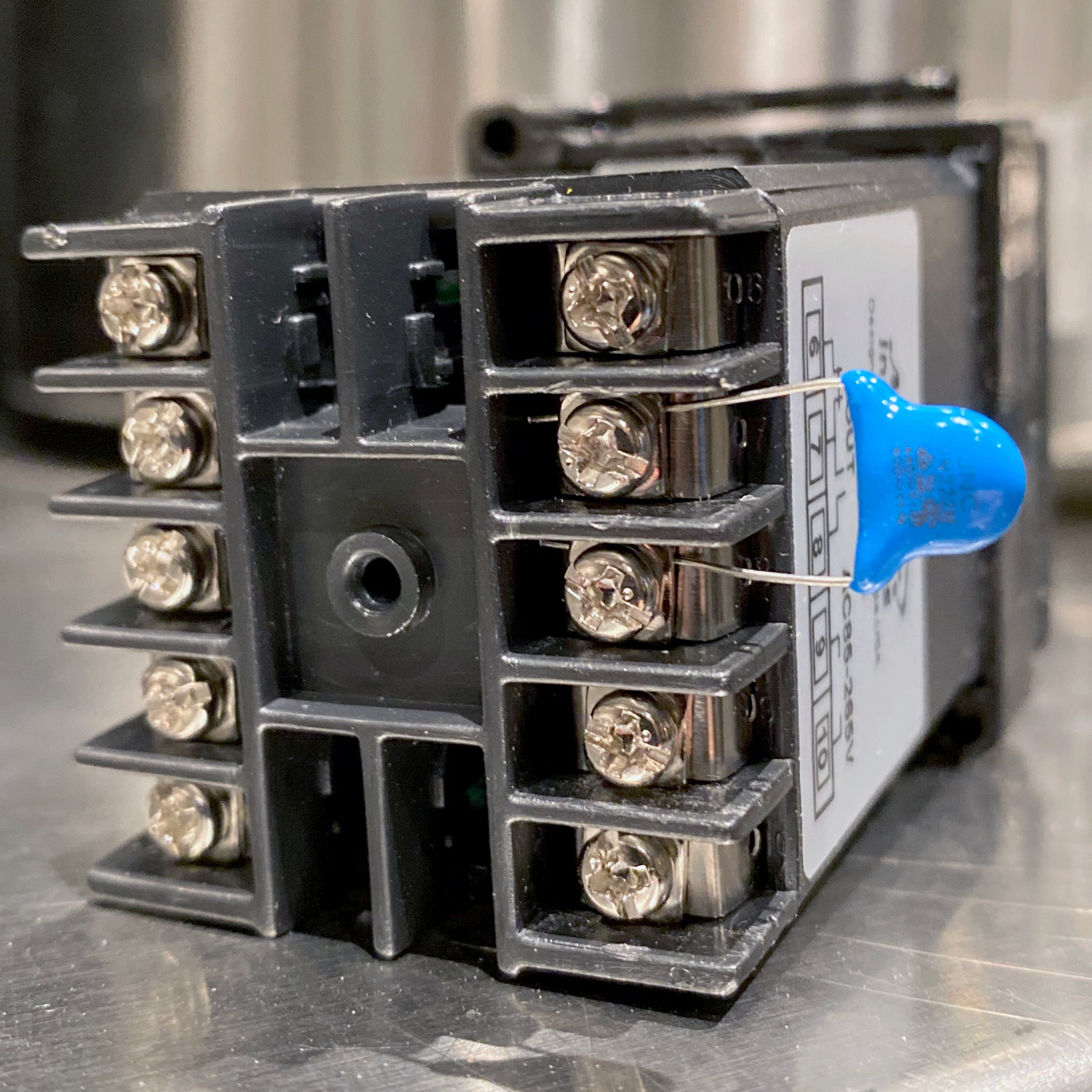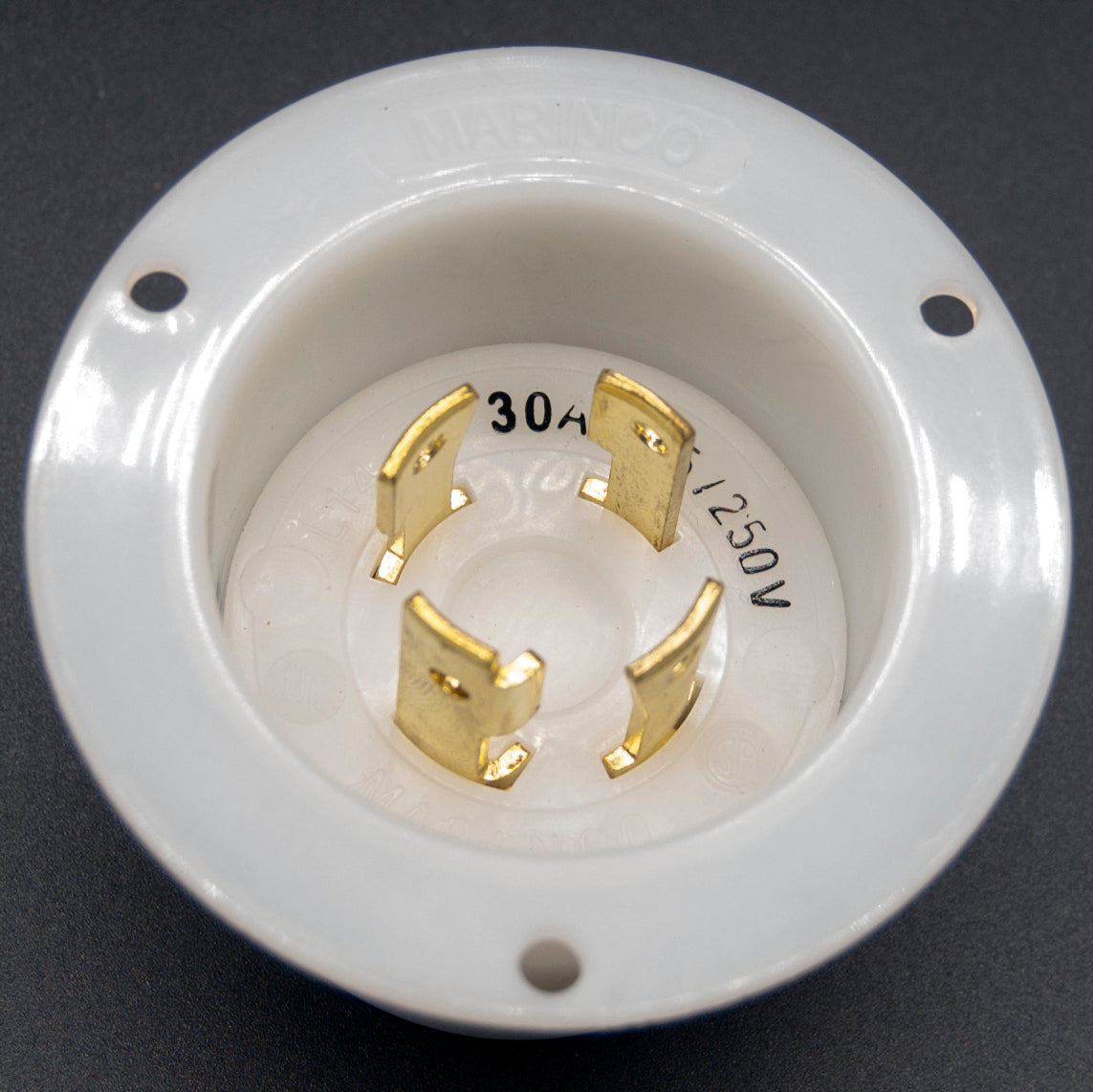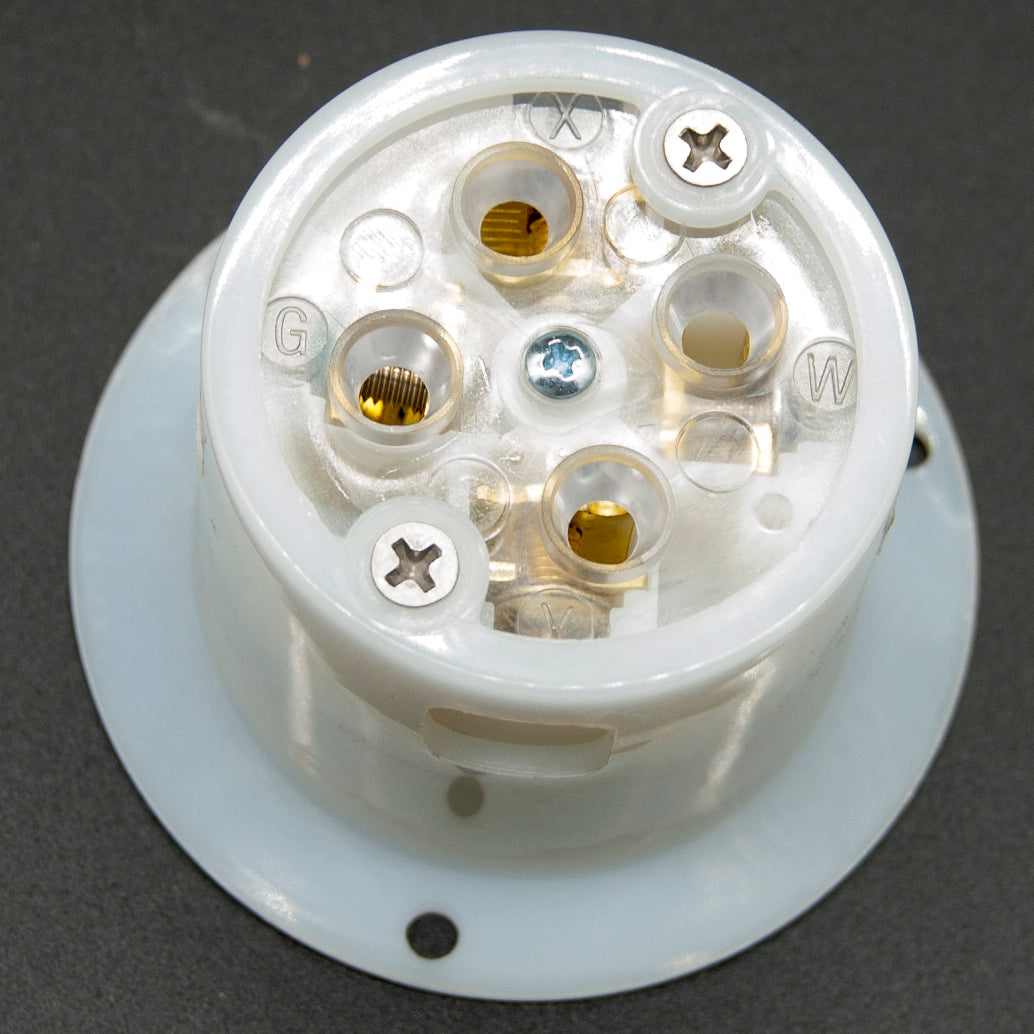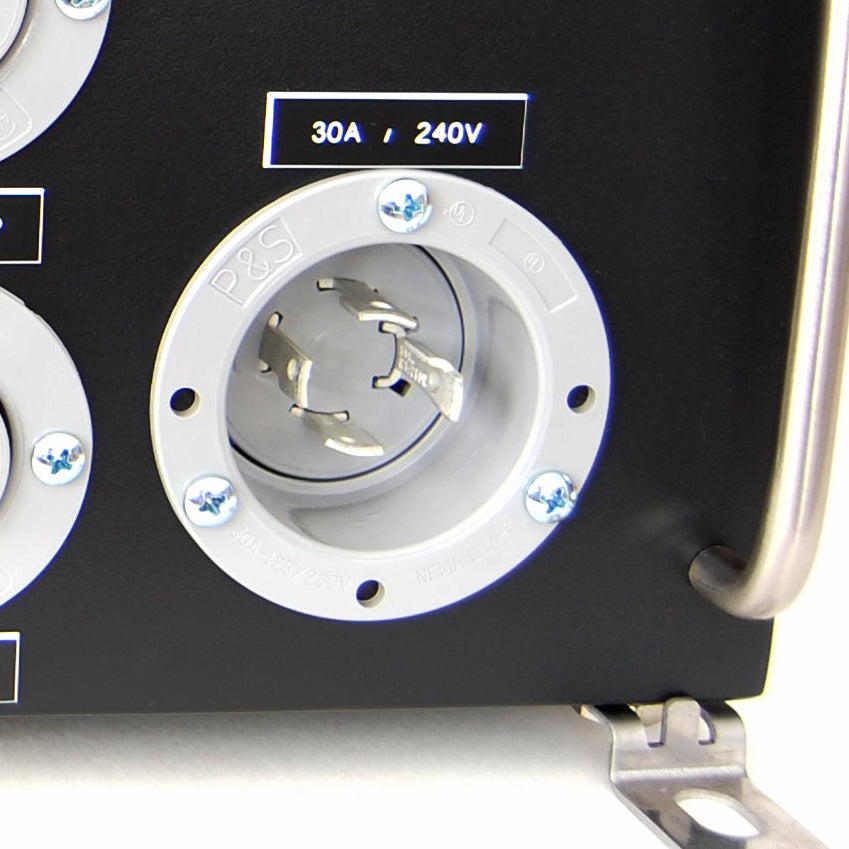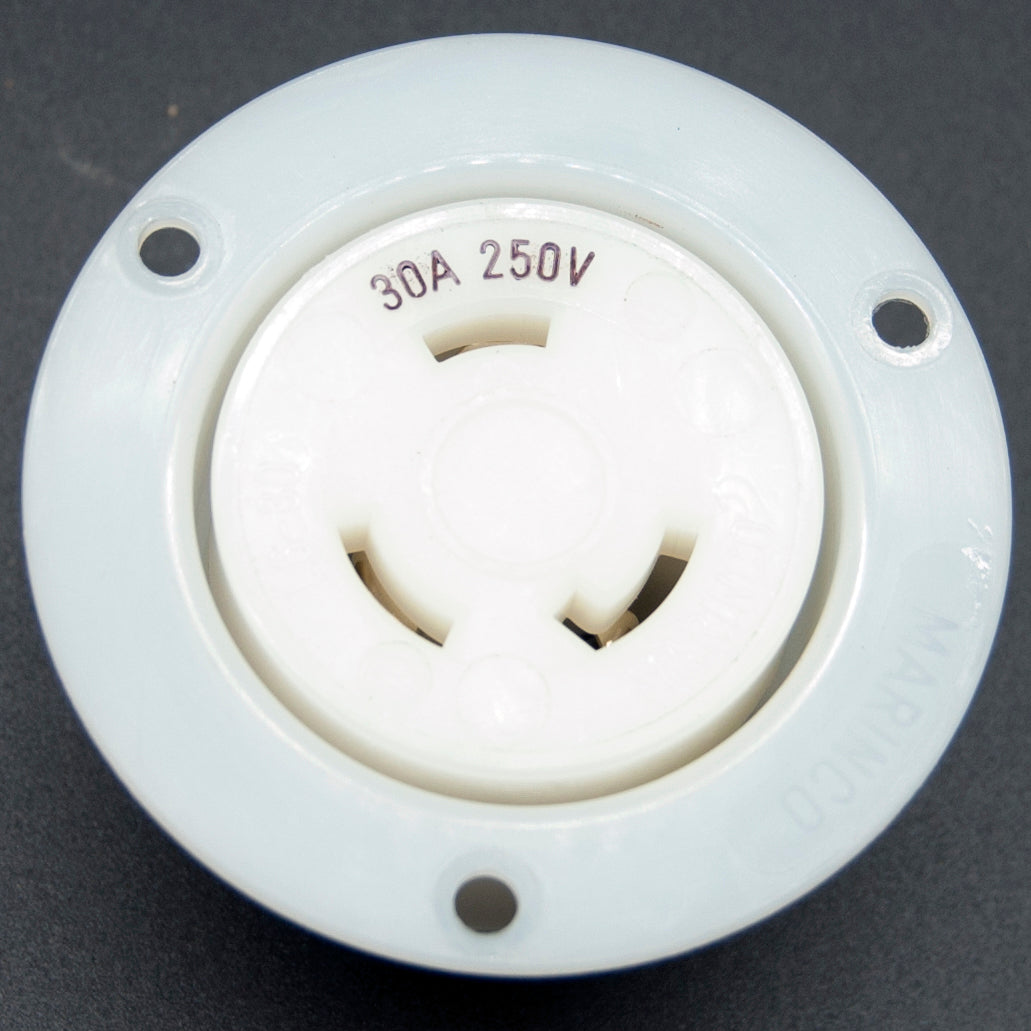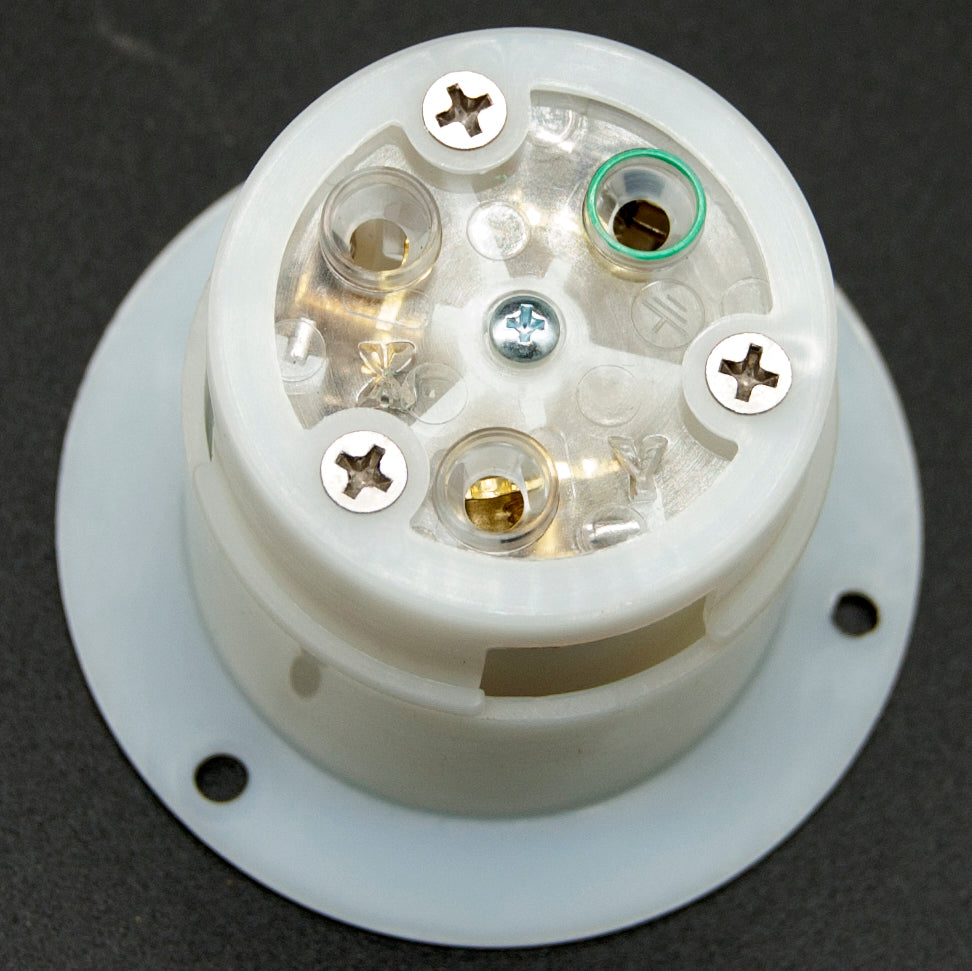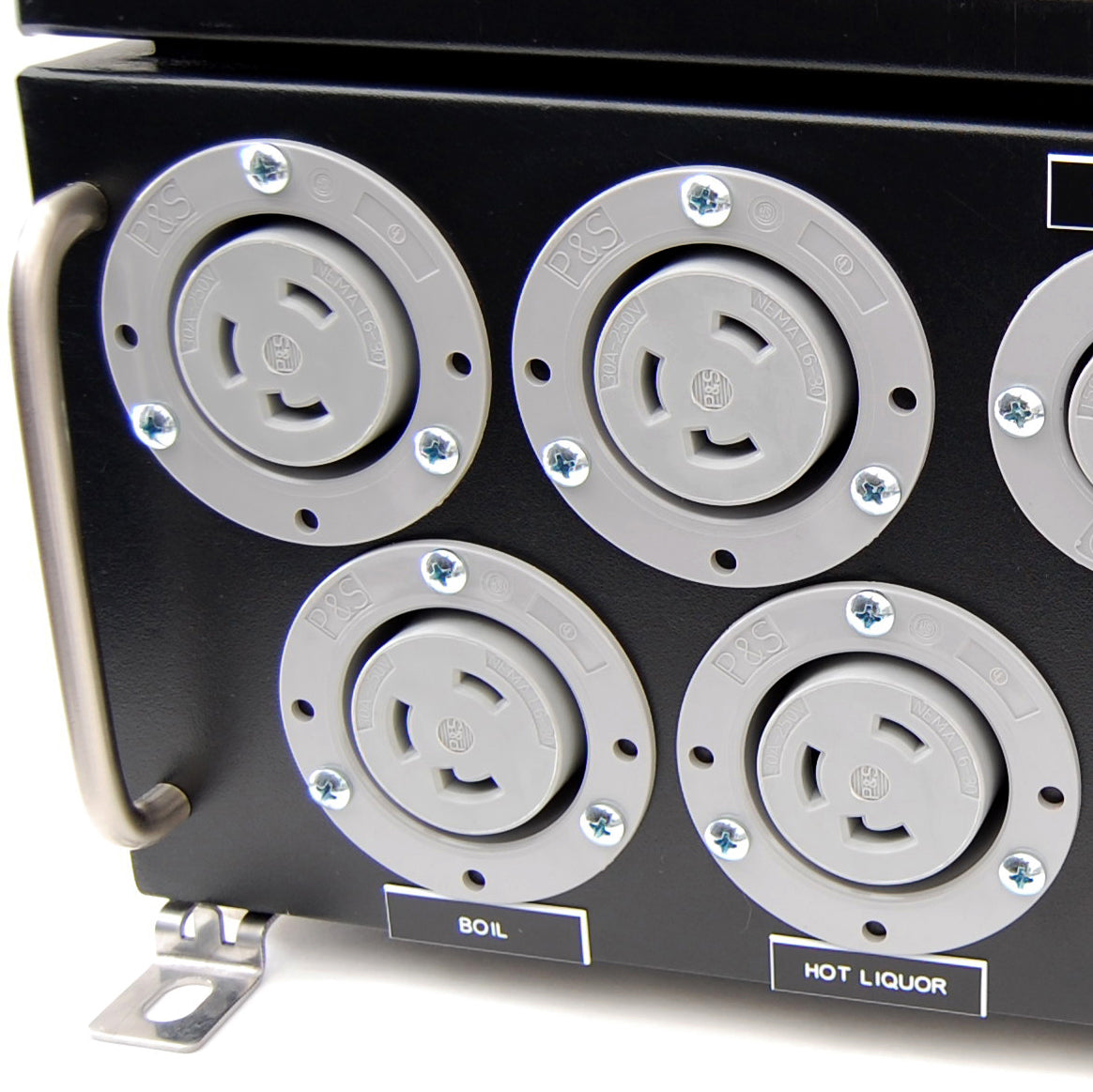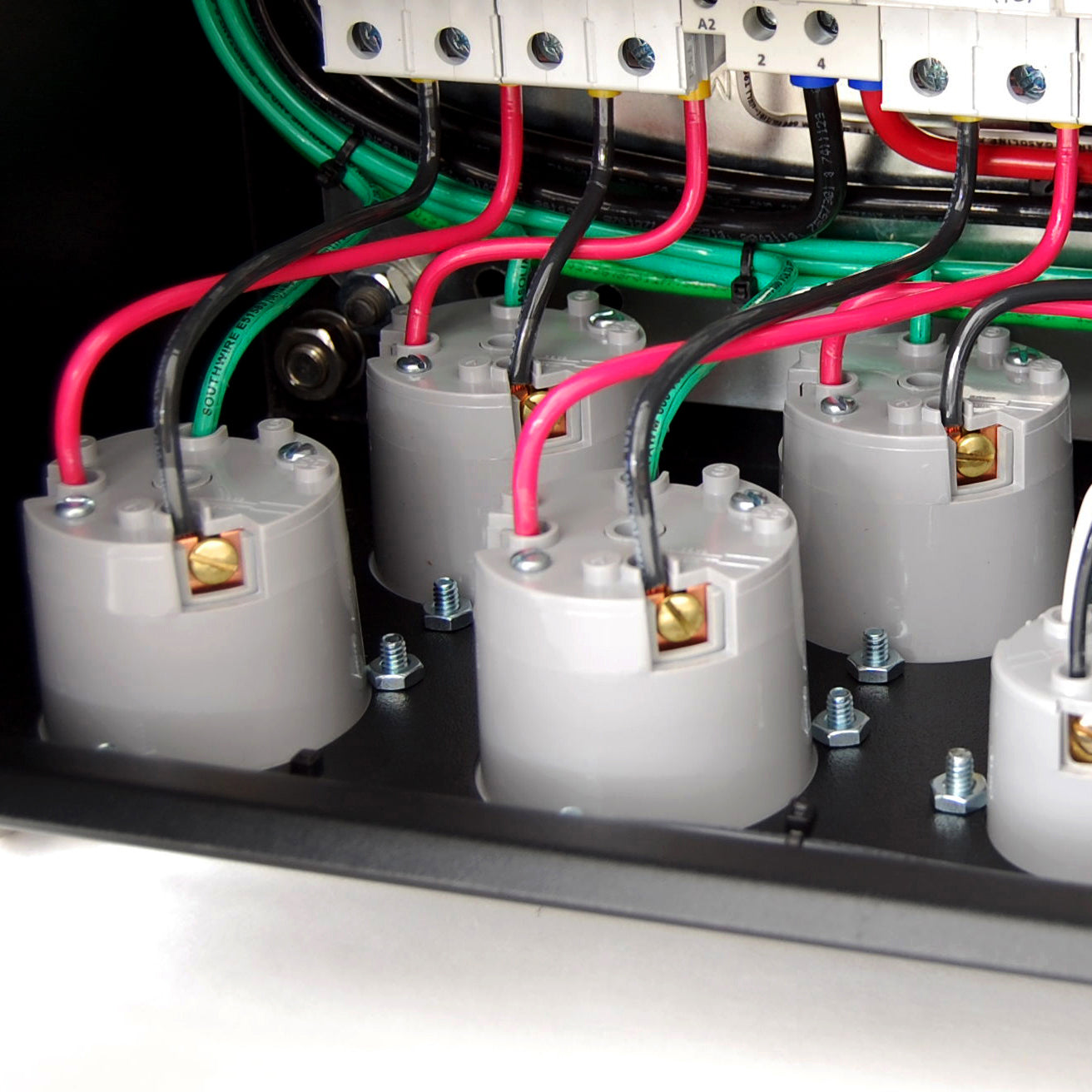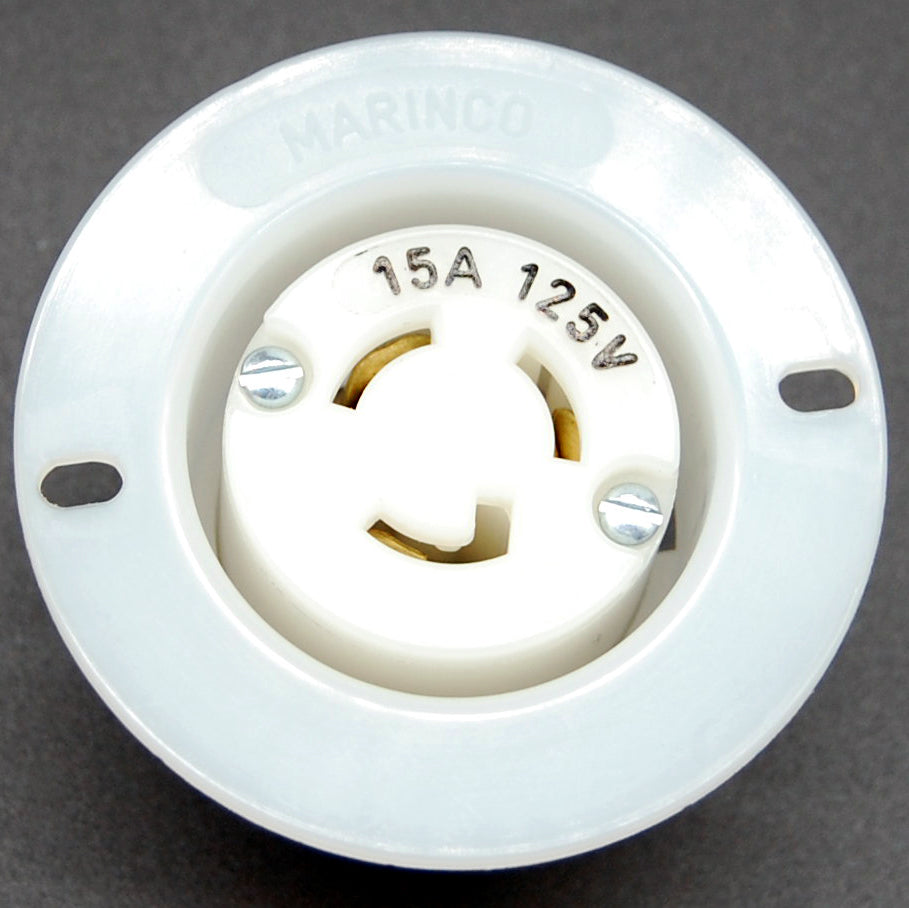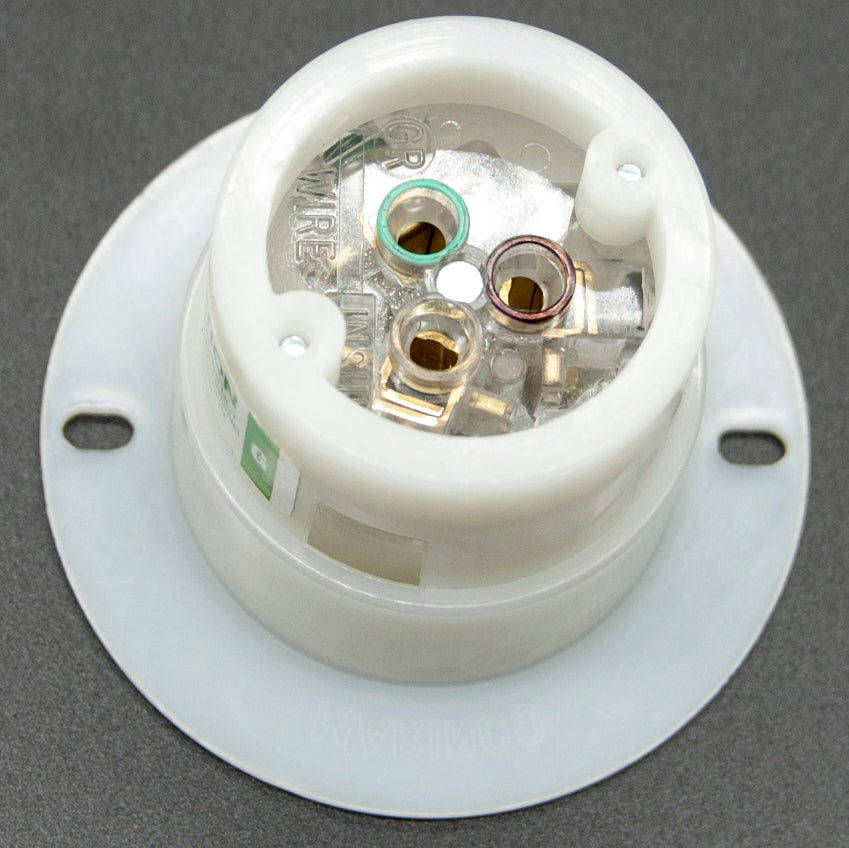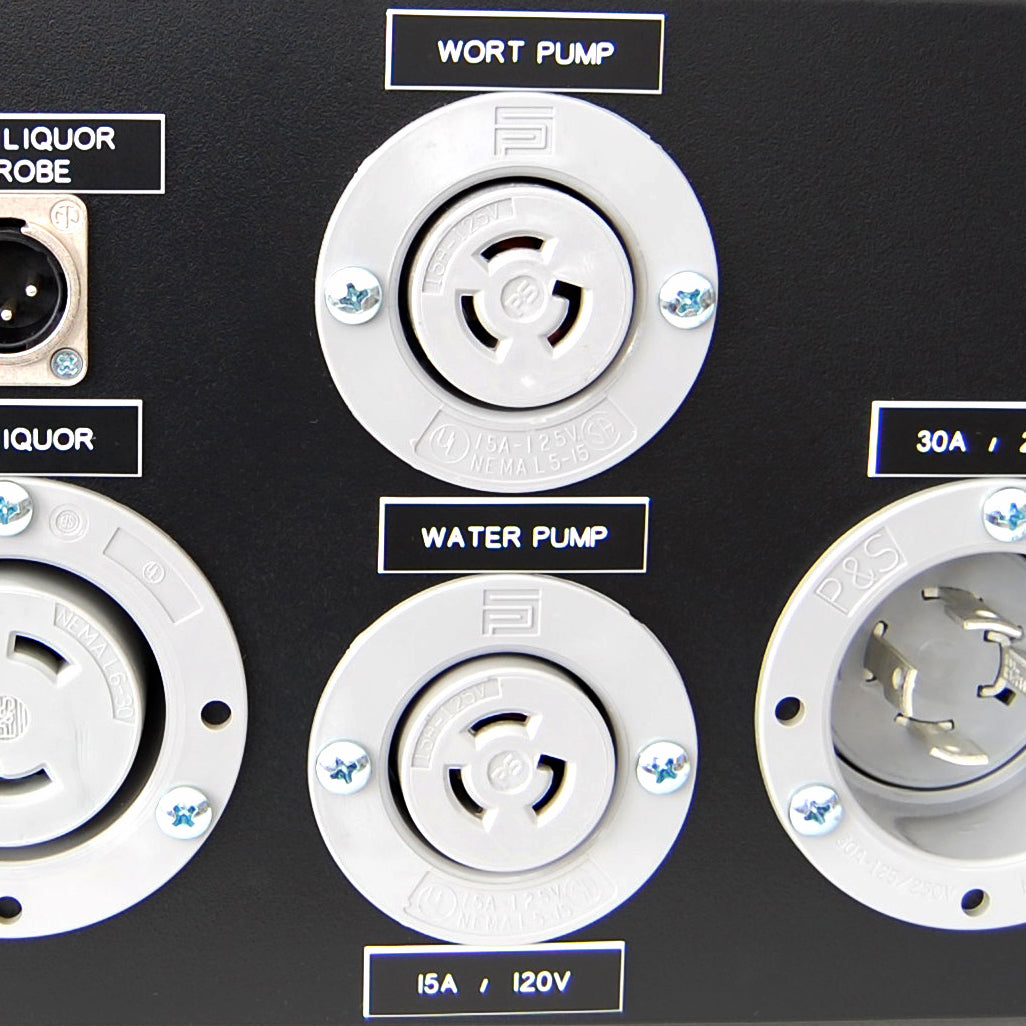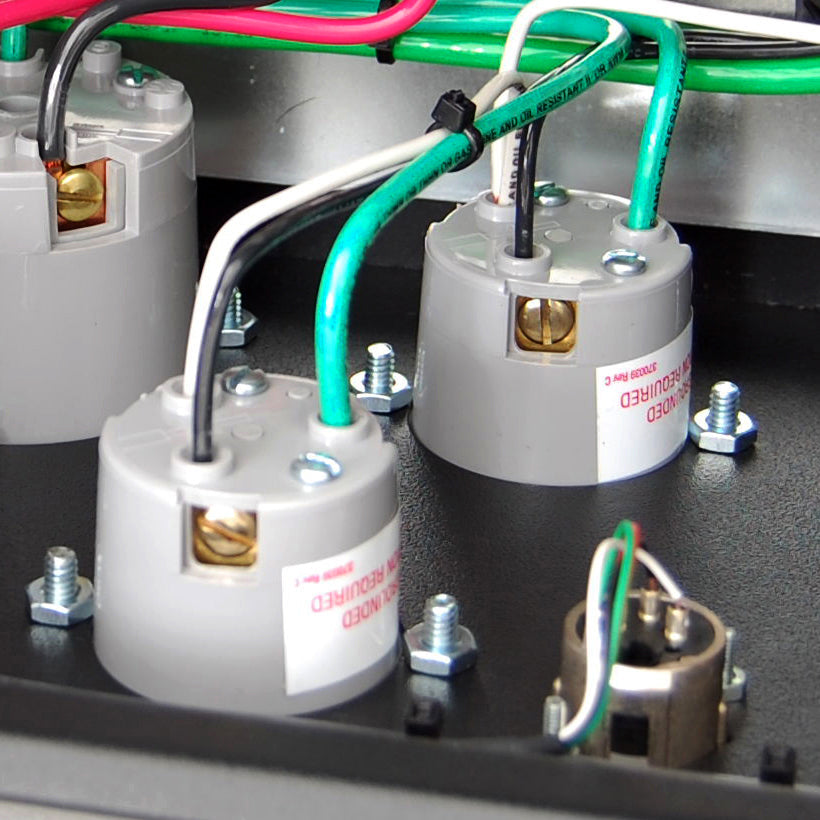Specifications:
- 5500W when run at 240V (or 1375W when run at 120V)
- Ripple
- Ultra low watt density (ULWD)
- 13.7" long from flange base to tip. For kettles approximately 13.5" in diameter or larger.
- 1" NPS thread (national pipe, straight). Please note that due to manufacturing variances we can only guarantee fit with our adapters and fittings.
- Optional 1.5" or 2" Tri-Clamp adapter available. Please note that with Tri-Clamp fittings the size refers to the outside diameter of the tubing that it makes a connection for, not the flange diameter (the flat disc part). A 1.5" Tri-Clamp adapter has a flange diameter of 1.988" while a 2" Tri-Clamp adapter has a flange diameter of 2.52".
Features:
- UL listing
- Available for worldwide use
- Stainless steel base that will not rust.
- Better sheath (tube) material made from a high performance nickel-chromium stainless steel (804) alloy with much better temperature and corrosion resistance than standard shiny 304/316 stainless steel elements.
ULWD elements prevent the wort from being scorched or caramelized as the heat output is only 50W per square inch (7.8W per square cm) or less. ULWD also provides added safety as the element will not break instantaneously if fired "dry" (not immersed in water) by accident. Mistakes do happen so we recommend that ULWD elements be used whenever possible instead of LWD, especially when the element is in contact with wort. The high performance nickel-chromium 804 stainless steel alloy sheath used on these elements provides additional strength to resist dry firing.
Camco stainless steel heating elements are already included in all of our Heating Element Assemblies (Pre-Assembled and DIY Kit).
What other sizes are available? What should I use?
The following sizes are available:
- Camco 02955: 4500W (240V), ripple, ultra low watt density (ULWD). 13.7" long from flange base to tip. For kettles approximately 13.5" in diameter or larger.
- Camco 02965: 5500W (240V), ripple, ultra low watt density (ULWD). 13.7" long from flange base to tip. For kettles approximately 13.5" in diameter or larger.
We recommend 5500W elements be used whenever possible for fastest heat times. One 5500W element provides enough heat to bring a typical 10-20 gallon batch to boil within a reasonable time frame. Two elements is recommended when boiling more than 30 gallons.
These ripple elements fit in any kettle with a diameter of at least 13.5" such as the 10-55 gallon Blichmann Boilermaker kettles and 'keggles' (15 gallon converted Sanke kegs used by many homebrewers).
All heating elements are somewhat flexible and can be carefully bent a bit if required. This is especially true of the ripple elements given that they come pre-bent with a wave.
What are the heating elements made of?
The base of the heating elements is made of 304 stainless steel and will not rust. The grey/charcoal heating rods are made from the highest Grade Nickel and Chromium Incoloy (804 stainless steel) which is high temperature and corrosion resistant. It is essentially a mix of premium grade nickel and stainless steel. Incoloy is stronger, lighter and more corrosion resistant than standard 304/316 stainless steel. It will also not rust. High temperature resistance allows the heating element to resist damage in the event that it is fired dry (not in water) by accident.
The new stainless steel ripple heating elements are essentially the same Camco 02953/02963 ripple elements that we've been recommending and using for years, but now with a stainless steel base that will not rust such that a magnesium anode is no longer required.
Why is the element darker than shiny no name elements?
Our elements have small radius bends and must be annealed to form them. The annealing process causes the surface of the element to oxidize and darken. The shiny no name elements either have larger radius bends or they are made from a softer, more malleable material that does not require annealing. The alloy used in our heating elements requires more steps in the manufacturing process, but we believe it gives a superior product as it is stronger, lighter and more corrosion resistant than standard 304/316 stainless steel.
Aren't shiny 304/316 stainless steel heating element better?
No. The grey/charcoal 804 stainless steel rods on our heating elements are stronger, lighter, more corrosion resistant and about 8 times more expensive to manufacture than standard 304/316 stainless steel (see previous questions for more details). Many of the shiny 304/316 stainless steel elements that are sold are also not ULWD and not UL listed.
While we love and use shiny 304/316 stainless in our brewery on just about every other surface, this is one place where we chose to use the best product for the job: Grey/Charcoal coloured 804 stainless steel heating elements.
A typical no name Chinese heating element made from softer 304/316 stainless that is also not ULWD and not UL listed:
Our heating elements use the same resilient nickel-chromium stainless steel alloy sheath as the popular 02963 model that brewers have been using for years. The 02963 shown in the picture below has been in use for over 5 years and still looks like new: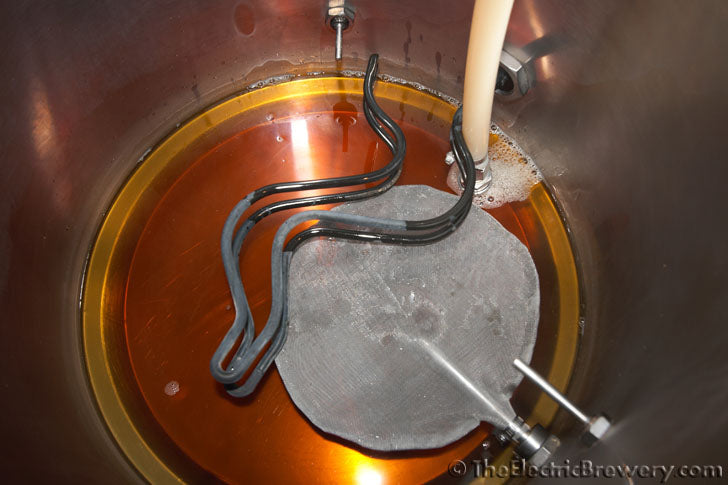
I want to replace my old elements with these ones but the nut inside the kettle seems rusted to the element. How do I remove it?
See our instructions: Replacing heating elements.
Are these heating elements UL listed?
Yes. All of the heating elements are from Camco (a US based manufacturer) and UL listed.
What voltage do these heating elements work at? How many phases?
In order to produce the stated 5500W power output, the heating elements require 240V AC, single phase.
They may also be run at lower voltage but the power output and current draw will be reduced. For example, running these heating elements at 120V produces one quarter of the rated power output at half the current draw. A 5500W element may therefore be powered from a standard 15 amp / 120V circuit to produce 1375W drawing 11.458 amps.
You may also use a single phase of a 208V or 400V 3-phase system: On most 3-phase 208V power systems 208V is available between any two of the phases (HOT lines) while on most 3-phase 400V power systems 230V is available between any of the phases (HOT lines) and NEUTRAL. At 208V, the 5500W produces 4133W and at 230V it produces 5053W.
Where can these heating elements be used?
Our heating elements may be used anywhere in the world. See previous question.
How does this heating element assembly compare to the Blichmann Boil Coil?
See this forum thread for our thoughts on the Boil Coil.
I'm using a different heating element. Why is the base rusting?
If using a different brand of element or the popular Camco 02963 model, the threaded silver coloured base of the heating element is not corrosion resistant and some rust may form on this base if water is left in the kettle for a prolonged period of time. These other heating elements are normally used in electric water heaters that also have a sacrificial anode installed to combat this issue. The anode's sole purpose is to oxidize first, thereby protecting the heating element base from rusting. Brewing kettles do not have an anode so make sure you do not leave water in the kettle for a prolonged period of time if using a heating element not specifically designed for brewing. This may be exacerbated if you have hard water. Some brewers will install a magnesium anode in the side of their kettle to combat this issue when using a different type of heating element. See this forum thread for some example installations and instructions.
What's included?
Only the bare heating element is included, with an optional Tri-Clamp adapter. If you require an enclosure, wiring, and plug, see our Heating Element Parts.
Visit our official Heating Element Assemblies product thread in our forum.


